Best Low-Profile Graphics Cards in 2024
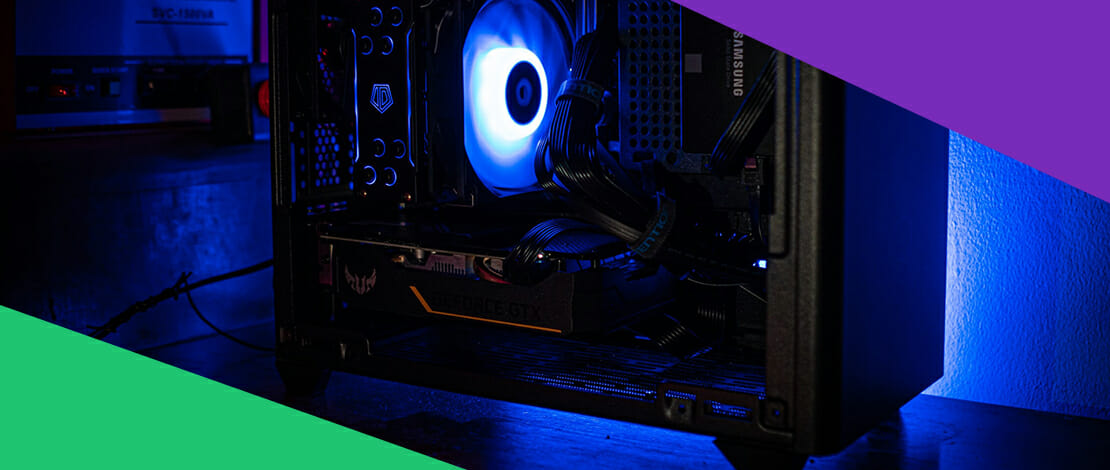
When building a PC for yourself you will be faced with many questions regarding what you will use it for, and what components are appropriate for your use case. One of the most important components in a build is a GPU, and in 99% of the cases, you will want a dedicated GPU for your PC.
You do not need to buy the best most expensive GPU on the market you can find because in some cases that will simply be a waste.
If you plan on mostly consuming media, doing some light office work, and some light gaming you can minimize the footprint of your build by using a smaller sized case in a mini-ITX build.
For this type of build, you will also need to buy a smaller-sized GPU that will fit in your build while offering you enough power to push FPS in games.
These smaller-sized GPUs will not be as strong as their chunkier brothers, but when building in a small case stressing out the GPU with loads will increase temperatures which are your worst enemy in this situation.
You will also most likely have to underclock your GPU instead of overclocking it to maintain the best temperatures for safe operation.
Do not get discouraged however because once again, considering the use case of these specialized builds, these low-profile GPUs will still be able to handle the light loads you will throw at them.
Since we got that out of the way let us look at what are the best low-profile graphic cards you can put in your small PC builds!
Top Low-Profile Graphics Cards
ASUS GeForce GTX 1660
Best Low Profile Gaming Graphics Card
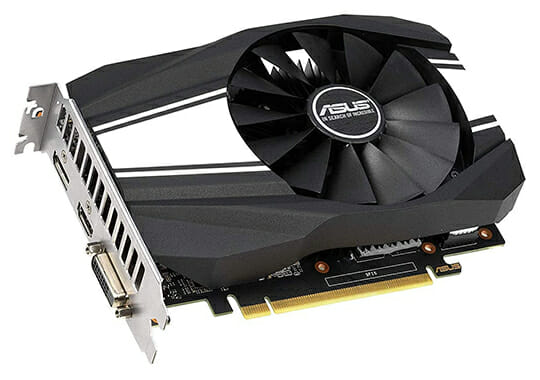
- 1785 MHz core clock speed
- 2001 MHz memory speed
- 6GB of GDDR5 VRAM
- Small form factor
- Powerful enough to power a lot of the games you would play
- Might be hard to find this exact model
- Will always lose to a standard size GPU for gaming
GeForce GTX 1650 D6 VENTUS XS OC
Gaming but Less Expensive
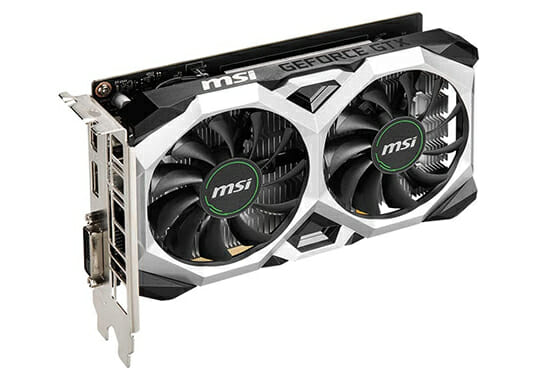
- 1740 MHz core speed
- 2001 MHz memory clock
- 4 GB of GDDR5
- Dual-fan design
- Still a small form factor
- Can power you through games
- Is a bigger low-profile GPU so you need to check for clearance
Gigabyte Geforce GTX 1050 Ti OC Low Profile 4GB
Truly Low-Profile GPU
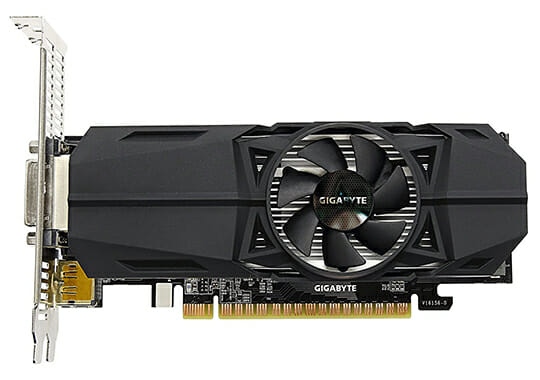
- Clock speed 1417
- Memory speed 1752
- 4GB GDDR5
- Super small size
- Enough power for basic tasks
- It will easily hit max temperatures if pushed around a bit
Gigabyte GeForce GT 1030 OC
Weakest Low-Profile Offering
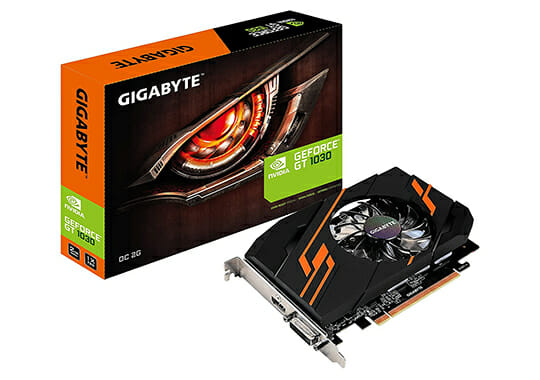
- Core clock at 1518 MHz
- Memory clock 1502
- ONLY 30W TDP
- Inexpensive GPU
- Low TDP means low temperatures
- Has flexibility with the DVI and HDMI ports
- It is only meant for office work
NVIDIA RTX A2000
The King of Low-Profile GPUs
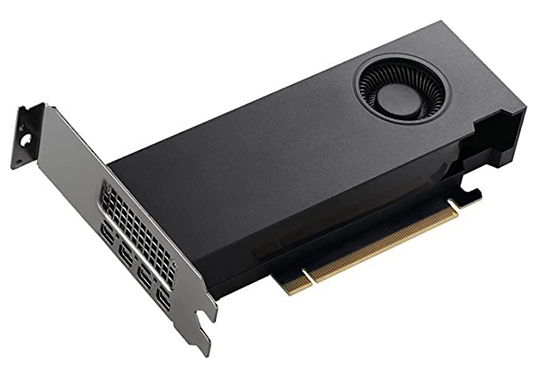
- Low-profile form-factor
- 70W TDP
- 6/12GB of GDDR6 ECC
With each new generation of GPUs, there is a clear trend towards more oversized heatsinks, more fans, and triple-slot mega-monstrosities that can barely fit in standard cases sometimes. For someone looking for a low-profile GPU, this is not great news since no new options have sprouted on the horizon.
Luckily there is a new development in the market, namely the downfall of crypto mining and the surfacing of mining GPUs like the Nvidia RTX A2000 which were designed for professional workstations with a powerful, low-profile design. In terms of gaming, it performs close to an RTX 3050/RTX 2060, has 6/12 GB of GDDR 6 with ECC, 4x DisplayPort 1.4, PCIe Gen 4, and consumes a measly 70W.
The real advantage of this GPU is the minimal power draw and efficiency while maintaining a low-profile form factor which is a must for certain PC builders. The pricing of the card currently is fluctuating but there is a clear downward trend, making this an exciting option that you need to watch out for.
- Ultra-slim form-factor
- Decent performance in the low-profile GPU market
- You can find used models for a lot cheaper than what they sell on the market
- A lot of these were mining cards so you need to inspect the GPU well
- Not designed for gaming, therefore, has weak thermal dissipation capabilities
How to Choose the Best Low-Profile Graphics Card For You
When looking at your choices of low-profile GPUs the first question you should be asking yourself is what exactly do you expect the GPU to be able to handle.
If you want to do office work but still be able to do some gaming then you definitely need to go for the 1660 or the 1650 GPUs. These graphics cards, although small, will be able to power through your games and deliver a respectable experience.
If you know you will be doing only light gaming that really does not need that much computational power then the 1050 Ti is a better fit for your build. Do not buy a 1660 or a 1650 GPU if you plan on playing old RTS games from 2005.
Lastly, if you are 100% sure your machine will only be used for work and media consumption you should not go above a GT 1030 GPU, since it will do just fine for your intended use case.
Think long and hard about your use case because the higher you go in the chain looking for more FPS, the higher the prices will climb!